Hopetoun House
Country House (18th Century), Hospital (First World War)
Site Name Hopetoun House
Classification Country House (18th Century), Hospital (First World War)
Alternative Name(s) Hopetoun House Estate; Hopetoun House Policies; Hopetoun Auxiliary Hospital
Canmore ID 49127
Site Number NT07NE 13
NGR NT 08856 79016
Datum OSGB36 - NGR
Permalink http://canmore.org.uk/site/49127

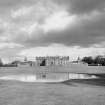


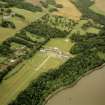




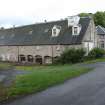

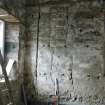





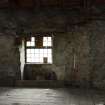









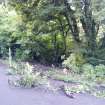



![Detail of stone layer [004] and layer [005] on W facing section](http://i.rcahms.gov.uk/canmore/s/DP00184394.jpg)







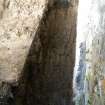










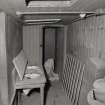
























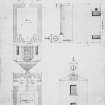





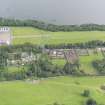



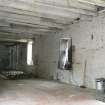
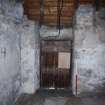
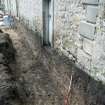
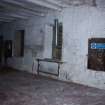
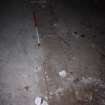





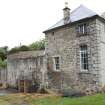


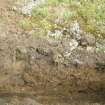


First 100 images shown. See the Collections panel (below) for a link to all digital images.
- Council West Lothian
- Parish Abercorn (West Lothian)
- Former Region Lothian
- Former District West Lothian
- Former County West Lothian
Hopetoun House, begun 1699-1701, Sir William Bruce
A truly princely mansion whose urn-capped balustrading, like a shimmering mirage, gradually rises from the landscape as you approach. As you reach the ha-ha and guardian sphinxes, carefully contrived to inculcate a sense of majesty, it reveals itself in its full splendour. Entrance front is predominantly William Adam, and sons John and Robert.
Bruce's façade was shorn of its pedimented, arcaded portico, pavilion roof and cupola, and was refaced with a dramatic skyline of urns and balustrades that caused people to refer to Hopetoun as the Scottish Versailles. William Adam's enormous new screen-wall with its huge, unbalustraded flight of steps, its round-headed windows and giant Corinthian pilasters succeeded in transforming a country seat into a palace. John and Robert replaced Bruce's convex flanking wing and offices with much larger concave colonnades terminating in new pavilions, which, with their pedimented centres, flat roofs and slightly old-fashioned cupolas, pay homage to Bruce's original façade.
The west front, with its axial views and its pond, is largely as Bruce designed it. Three flanks of Bruce's Hopetoun stand proud, the façade with a central round-headed pediment flanked by diminutive pediments on each flank, with a dumpy and very continental effect. Roofscape and chimneys may not be original. The excellent quality of the stonework is attributable to Tobias Bauchop.
Bruce's interior is best in the outstanding octagonal timber-panelled staircase-hall, probably the assured work of Alexander Eizatt, the top landing of which is flamboyantly exuberant with scrolls, pediments, pilasters and mouldings reproducing, in timber, Scottish Renaissance motifs we are more accustomed to seeing in stone. Modern trompe-l'oeil panel paintings by William McLaren, 1970. Magnificent painted baroque ceiling rediscovered by Rab Snowden from overpainting. Plainly elegant and well-proportioned rooms with timber-panelled interiors under simple coved ceilings; particularly the lovely garden room and dining room. The Adams recast the principal entrance hall and created what are now the Great Bed Chamber and the Yellow and Red Drawing Rooms - both by Robert after his return from Italy in 1758.
Extensive, beautiful policies, best viewed from the rooftop above the north pavilion (originally stables). Ornamental west garden between the house and the Round Pond. To the north lie the north deer park, the bog wood, the bastion walk and the wilderness; to the east the lime avenue, and to the south, another deer park. Main gates, 1893, by Robert Rowand Anderson, flanking quadrants with Tuscan columns and crowning vases, and an impressive over-panel incorporating the family crest. The main lodge, also by Anderson, is a doll's house with pedimented porch. The lodges - west, east and mid - are in ashlar, with slate roofs projecting over angled bay windows and grouped octagonal chimneystacks. The service courtyard has a fine long steading, 1774, with lofts over arched shed openings, a pedimented slaughterhouse (now squash court) and a workshop, 1740. Walled garden, with Gardener's House at east end, stretches down the slope to the burn. Quaint thatched cottage.
Taken from "West Lothian: An Illustrated Architectural Guide", by Stuart Eydmann, Richard Jaques and Charles McKean, 2008. Published by the Rutland Press http://www.rias.org.uk
NT07NE 13.01 0875 7900 Formal Garden
NT07NE 13.02 0944 7881 Garden (possible)
NT07NE 13.03 08219 79004 Mausoleum
NT07NE 13.04 08934 78843 Squash Court
NT07NE 13.05 09024 78885 Workshop
NT07NE 13.06 09743 79051 Society House
NT07NE 13.07 09798 79047 Easter Society
NT07NE 13.08 08411 79201 Summer House I
NT07NE 13.09 08684 78682 Summer House II
NT07NE 13.10 0873 7838 Fish Pond (site of)
NT07NE 13.11 0854 7821 Fish Pond; Curling Pond
NT07NE 13.12 0907 7912 Ice House
NT07NE 16.00 07404 78589 Midhope Bridge
NT07NE 16.01 0740 7858 Cross-slabs
NT07NE 28 07990 79299 Nethermill Bridge
NT07NE 29 09434 78539 Obelisk Cottage
NT07NE 33 0880 7743 Hopetoun Estate Cottage
NT07NE 36 09016 78851 Steading
NT07NE 38 07802 78763 West gate-lodge and gates
NT17NW 193 10033 78887 East Lodge and gates
NT17NW 236 10045 78624 East Lodge (Butlaw Lodge)
(NT 08856 79016) Hopetoun House, the seat of the Marquis of Linlithgow, was commenced in 1699 and completed by 1703. This work (shown in red on plan) survives in the W facade and in the small rooms of the centre block of the house. In 1721 William Adam was engaged to enlarge the house. Much of the earlier building was removed, the centre block was widened, and the colonnades and pavillions were added.
E I Musgrave and B Skinner, undated; RCAHMS 1929, visited 1926
Hopetoun House is as described and planned.
Visited by OS (DWR) 28 March 1974
Fully described.
C McWilliam 1978
Photographed by the RCAHMS in 1980.
(Undated) information in NMRS.
Inventory of gardens and designed landscapes in Scotland Vol 5 112-120.
Site recorded by GUARD during the Coastal Assessment Survey for Historic Scotland, 'The Firth of Forth from Dunbar to the Coast of Fife' 19th February 1996.
OWNER: Earl of Linlithgow
ARCHITECT: Sir W. Bruce Centre portion 1696
William Adam Wings
Sir Robert Rowand Anderson Entrance gates and lodges
William McLaren 14 panels for insertion in
central staircase 1967
NMRS REFERENCE:
Schomberg Scott Plans
Alterations to form new private Dining Room in the basement of the South Wing.
W Schomberg Scott Photograph Collection, Acc No 1997/39
The garden front - 2 prints
HOPETOUN DRAWINGS
NMRS Photographic Survey of a collection of drawings found in the laundry at Hopetoun House in the 1960's including: designs for alterations, new safe etc by Rowand Anderson and Paul 1904; Engineers' drawings by Glyde, Chaffey and Co 1910 and many designs for estate buildings 1877-1904.
Copied 1985 Inventory 146
EXTERNAL REFERENCE:
National Archives of Scotland
William Adam, architect, in a letter to Sir John Clerk mentions that 'My Lord Hopetoun is pressing so much'. Lord Hopetoun cannot begin his quarry until Adam is there.
1726 GD 18/4729/1
Robert Adam writes that Lord Hopetoun is afraid that Adam will find fault with everything at Hopetoun House. He mentions that he has already thought of a scheme for the library which would make it one of the finest in the world.
1755 GD 18/4783
Robert Adam writes that Lord Hopetoun is pleased with the chimney piece sketches he has sent.
1755 GD 18/4783
Description of a visit.
1778 GD 126/Box 30
Hopetoun. New Hothouses.
1841 NRA(S)888/Box 8/13
Hopetoun House Garden
Vouchers of accounts
1876 NRA(S)888/3156
Hopetoun. Directions to James Jamieson for finishing and colouring the plan of Hopetoun Gardens.
1754 NRA(S)888/1509
Poem by Susan Clerk about a party at Sunnyside has in its introduction a few lines about a glittering reception at Hopetoun by way of contrasting with simplicity of Sunnyside. Tenducci (?) Italian singer performed, laurel wreaths, fireworks etc.
GD/18/4477
Proposed plans for Hopetoun House.
Letter from the 1st Earl of Hopetoun to James Duke of Montrose. He has got the drafts of his house from Lord Hyndford 'but the trouble this country is in has put everything of that kind out of our mind.'
1716 GD 220/5/617
NATIONAL LIBRARY OF SCOTLAND:
Vitruvius Britannicus, Volume 2, page 75-77.
Country Life, August 22nd 1947.
SMT Magazine, July 1951.
Photographic Survey (1956)
Photographs of Hopetoun House, West Lothian, by the Scottish National Buildings Record in 1956.
Photographic Survey (March 1962)
Photographic survey by the Scottish National Buildings Record/Ministry of Works in March 1962.
Publication Account (1985)
The Hopes came to West Lothian in 1657 to extend silver- and lead-mining interests acquired by marriage a little earlier. They acquired land at Abercorn in 1678, transferring the name of , Hope to un', formerly associated with the village ofLeadhills. Mining, linked increasingly with progressive approaches to agricultural improvements on their many estates across southern Scotland, provided the wealth to build one of the most palatial mansions in Scotland.
Sir William Bruce, (c 1630-1710) was the founder of the classical school in Scotland and a pioneer in garden design and planting. He worked on the reconstruction of the Palace ofHolyroodhouse in 1671-79, and Hopetoun House (1698-1702; extended 1706-? 10) represents his grandest country house. The Bruce house consisted of a centrally-planned main block (most of which survives); angle pavilions linked to office wings by convex colonnades (which do not: and the colonnades may never have been built). The fonnal gardens associated with this period, laid out with the help of Alexander Edward, can be picked out from the roofin a dry summer as crop-marks' in the green lawns sweeping down to the fountain.
In 1721, the then inexperienced William Adam (1689-1748) was invited to enlarge the house and to provide a palace for the Earl. The work was completed in the 1750s, reputedly by both his sons, John and Robert Adam, but in practice by John.
The marriage of the two great houses, however, is uneasy. The new attic floor and balustrade simply stops when it reaches the older west front; and some of the blind or false windows suggest a strain in blending new interiors to a partly-existing exterior. A "reluctant centrepiece" the Bruce house has been called, in the later, elongated, west elevation. Moreover the new colonnades, without the imposing central portico and double curving staircase planned for the east front but never built, hardly measure up to the elegant steeple-topped pavilions (one with a clock, the other a weather-vane), or to the magnificent facade. This elevation incorporates massive Corinthian pilasters, a rash of horizontal string-courses drawing it all together, and a rich variety of rustication breaking up the solid front of large angular masonry.
Internally the relationships between the houses are much happier. The elaborately ornate and formal state-rooms fitted out by the Adam brothers after 1752 are far removed from and contrast with the relative simplicity and domesticity of the Bruce rooms-which include a tiny vaulted strongroom. The octagonal Bruce stone staircase incorporates oak panelling richly carved by Alexander Eizat (who also workd at Holyroodhouse).
Elsewhere the wide range of ancillary buildings and servants' quarters emphasises the symbiotic relationship of an intensive labour force required to maintain an aristocratic life-style-whilst gradations of quality and expense in the the laying-out of stables and stable courts reflect a strict hierarchy as much amongst horses as amongst humans!
Information from 'Exploring Scotland's Heritage: Lothian and Borders', (1985).
Watching Brief (12 November 2012 - 26 February 2013)
A programme of archaeological monitoring was carried out in order to satisfy a condition of the planning consent for the construction of a biomass heating plant at Hopetoun House, Abercorn, West Lothian. The programme of works comprised the monitoring all ground works associated with the laying of the conductor pipes across the gardens to the west and south of Hopetoun House. The work including the excavation of a number of inter-connection trenches 0.8m wide and 1.2m deep totalling over 1000m in length . These trenches revealed a number of stone-lined and brick culverts that were probably associated with the construction phase of Hopetoun House in the early 18th century.
Headland Archaeology 2012
Project (March 2013 - September 2013)
A project to characterise the quantity and quality of the Scottish resource of known surviving remains of the First World War. Carried out in partnership between Historic Scotland and RCAHMS.


































![Detail of stone layer [004] and layer [005] on W facing section](http://i.rcahms.gov.uk/canmore/l/DP00184394.jpg)







































































